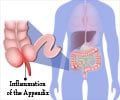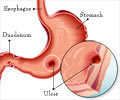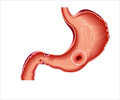How is H. pylori -related ulcer diagnosed?
Endoscopy and stomach biopsy:
Endoscopy is done by a Gastroenterologist, to see whether the symptoms present are caused by an ulcer; he examines the inside of the esophagus (food pipe), stomach and duodenum. While in the stomach, it is usual to take up to ten small biopsy samples from the lining of the duodenum, stomach, and esophagus.
Tissue tests are performed using the biopsy samples that are removed during the endoscopy.
There are three types:
- The rapid urease test, this test detects the presence of the enzyme urease, which is produced by H. pylori due to the breaking up of urea present in the stomach.
- Histology test involves the examination of the tissue by a pathologist to detect the presence of H. pylori in the tissue sample.
- A culture test involves isolation of H. pylori from the tissue sample and growing the bacteria in a specialized bacteriological media, where the media is incubated for 7 days for the growth of H. pylori and examined under a microscope. An antibiogram of the isolated bacteria is done in culture plates to identify which antibiotic could be used for the effective treatment of H. pylori.
Stool antigen test:
A stool antigen test detects H. pylori antigen present in the stool. The presence of the antigen is tested by using specific H. pylori antibodies which reacts with antigens present in the stool of infected patients. Stool antigen testing may be done to help support a diagnosis of H. pylori infection or to determine whether treatment for an H. pylori infection has been successful. (Lab test - Hpsa test).
H. pylori antibody in blood test:
The serology test has a high specificity and sensitivity for detecting H. pylori infection but should not be used for follow-up of treated patients. ELISA (Enzyme linked Immunosorbent Assay), is used for detecting H. pylori antibodies in the blood. (See also, lab test - H. pylori blood test).




















